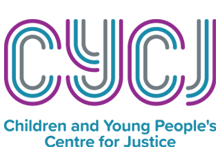David Orr advises us not to panic…
Recently, I attended the event Morals in Moral Panic, the fourth and final in the series of Economic and Social Research Council (ESRC) funded seminars exploring the phenomenon of moral panic as it relates to 21st century social issues and anxieties. One of the drivers for the seminar series which commenced in 2012 was the intention to mark the 40th anniversary of the publication of Stan Cohen’s seminal work Folk Devils and Moral Panics.
Professor Stephen Webb kicked things off by suggesting that the etymology of the term moral panic could in fact be traced back to 1769 and Sir Albert Moral, resident of Orkney. Moreover, it was suggested that the nature of moral panics has changed over time. Where before the concern was with witches and ‘Reds Under the Bed’ in the McCarthy era, moral panics are increasingly linked to particular social phenomena from “twerking” to trafficking as opposed to individuals.
However, the overriding message, emphasised by Frank Furedi, was that it is important to explore the moral dimension of panic theory. With reference to the work of David Garland, he noted that when someone dismisses concerns about a social phenomenon as little more than a “moral panic”, that person may be refusing to acknowledge the legitimate fears of others. This can go hand-in-hand with unstated negative assumptions about the morality of those who promote moral panics. During a week when UKIP managed to secure one of the six Scottish seats in the European Parliament with its unrelenting anti-Europe and anti-immigration message, this analysis certainly gives pause for thought.
How does this relate to social work practice and to youth justice specifically? Well, a quick, in-exhaustive and by no means undisputed rundown of supposed moral panics in social work in the last 20 years might include the following:
Historical abuse in residential child care
New Technologies and Internet Offending
The ‘Pornification’ of youth
Child Sexual Exploitation;
Trafficking
‘Neds’ & ‘Hoodies’
Knife Crime
Child protection and the ‘Named Person’
Risk Assessment and Risk Management.
In reflecting on the content of the day’s seminar, I wondered about what might be the opposite of moral panic. Immoral complacency? Unethical calm? As with so many complex phenomena, thinking of the world in black/white, either/or binaries tends not to be terribly enlightening. Take the Jimmy Savile case and Operation Yewtree. Egregious acts of sexual abuse focused primarily in the 70s and 80s were evidently perpetrated by individuals in positions of power and influence, not least in the BBC. Recently, several high profile figures have been found guilty in a Court of Law for these abuses, specifically Stuart Hall and Max Clifford. Savile was never subject to such proceedings but the “Innocent until proven guilty” precept appears to have been dispensed of in his case. What seems clear is that when a moral panic narrative takes hold, it often generates a great deal of heat and not a huge amount of light.
My view would be that the abuse of children and young people, when it emerges, whether in the form of allegations or tangible evidence, ought to be investigated in a robust and transparent fashion. Those responsible for such acts of abuse should be held to account. To either overstate or underplay the frequency, severity or prevalence of behaviour as significant and harmful as child sexual abuse is clearly irresponsible. I have no truck with ‘moral entrepreneurs’ who may seize on such a phenomenon, exaggerating its endemic nature, in order to attract funding for projects and activities aimed at tackling the scourge. Equally, I have no truck with those who would prefer to sweep matters under the carpet or talk of “a few bad apples” than address the reality of what may have taken place and to respond to it accordingly.
From a social work perspective, I took away two important messages from the seminar. Firstly, it remains as important as ever to retain a sense of curiosity and willingness to question. Why would somebody say that? What reason does X have for claiming Y? What if I am wrong? Secondly, it is essential to avoid being drawn unnecessarily into diversionary activities that might distract attention from issues pertaining to social injustice and inequality. How much of the moral panic about ‘neds’ and ‘hoodies’ at the start of the noughties served as a smokescreen for a raft of policies that ensured already socially disenfranchished young people were further stigmatised and victimised?
Maybe we should be spending less time reading Cohen and more time on the work of Thomas Pinketty?
About the blogger
David Orr is a National Development Consultant with CYCJ’s practice team, seconded from Edinburgh Youth Offending Service (YOS). His specialisms include managing high risk offenders and restorative justice, particularly its application in the aftermath of serious harm. Read more about David.
